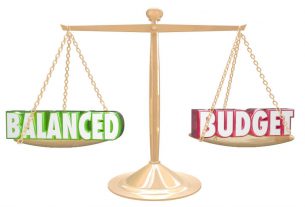At this point everyone realizes that the Federal Reserve’s balance sheet is set to increase in a major way. The only question is when (or if) it will stop, and how quickly it will increase. Many analysts today believe that the Fed’s balance sheet may very well top $10 trillion by the end of the year, and that may not even be the end of it. Needless to say, that would be very damaging for the economy.
As of March 11, the Federal Reserve’s balance sheet stood at $4.31 trillion, not too far off its all-time high. Two weeks later it had increased by nearly $1 trillion, to $5.25 trillion. And in the past week it has increased over $500 billion, to $5.77 trillion. With the potential for much more liquidity to be injected into the financial system, and with the Federal Reserve continuing to open up new credit facilities each week, there’s no telling how far the Fed will go in its attempts to create new money.
All of this will be incredibly destructive to the value of the dollar, with each newly-created dollar driving down the purchasing power of existing dollars. The obvious result of that will be to drive up prices and drive down the standard of living of millions of Americans.
The Fed has all but capitulated to Congress and the administration, as the $2 trillion stimulus bill will have to be paid for somehow, and there’s no way that Congress is going to raise taxes to do that. With talk of a $2 trillion infrastructure bill to somehow boost economic growth, there’s a great likelihood that the federal government may very well spend trillions of dollars over the next few years, driving the national debt through the roof.
Estimates right now are for a budget deficit of $3.7 trillion for this fiscal year, and at least $3 trillion in FY 2021. And all of that spending will be monetized, if indirectly, by the Federal Reserve.
Investors need to pay attention to this and realize that it will be a long time before markets get back to normal. This monetization of the debt by the Fed is the first step on the way to hyperinflation and destruction of the dollar and dollar-denominated assets. Once central banks begin to monetize government debt, the ability to say no to more and more debt monetization deteriorates.
Now that the government knows it can monetize trillions of dollars of debt by selling Treasury securities to the Fed, there is no check on the power of limitless spending and money creation. This is how economies are destroyed. This is the path of Weimar Germany, of Zimbabwe, of Venezuela. We’ve seen what unlimited money creation does to currencies and economies, and we know where all of this will lead. Investors who fail to take notice and who fail to protect themselves will see their investments wiped out.
Weimar Germany is a particularly poignant example of a country with a strong industrial base that nonetheless went down the path of hyperinflation, believing that it could print its way out of trouble. Retirees whose pensions and life savings should have lasted them through old age saw the value of their savings reduced to pennies. Many who didn’t have family to support them ended up starving to death or committing suicide.
Those who came through the crisis best were those who had tangible assets that they could rely on to trade for food and necessities. Those tangible assets included gold, silver, and foreign currencies that were still backed by gold or silver.
Investors who want to withstand the coming financial crisis need to understand that they need to take steps today to safeguard their assets, including investing in gold and silver. With the ability to roll over existing retirement account assets from a 401(k) into a gold IRA, investors can protect their existing retirement savings without tax consequences, and ensure that their wealth remains intact no matter what transpires in financial markets. If you want to make it through the coming crisis unscathed, you owe it to yourself to look into investing in gold and silver today.
This article was originally posted on Goldco.




